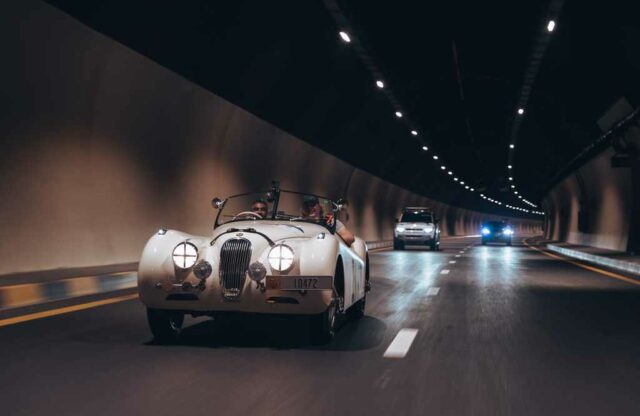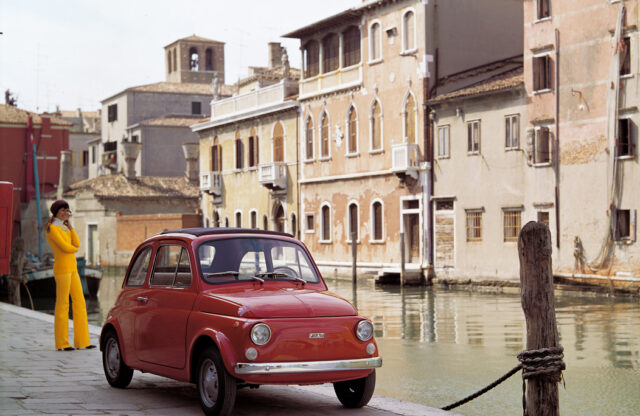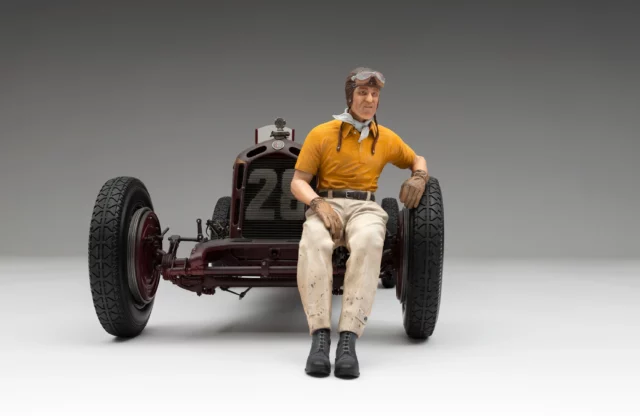WORDS: NATHAN CHADWICK
2024 has seen a plethora of superb books for automotive enthusiasts on four wheels or two, and as Magneto heads into the festive period, we’re looking back at some of the highlights from the past 12 months, plus several new releases. Just remember to leave this page open should any relatives need some festive suggestions more appropriate than yet another jumper that will never get worn…
SuperBears: The Story of Hesketh Racing

In recent years we have become accustomed to (and possibly weary of) the phrase ‘disruptors’, whether it be in media, business or sport. Wind back 50 years, however, and the story of the Hesketh team was similarly disruptive. A Brit in his early 20 literally and figuratively parked his boat in the centre of the Formula 1 universe, determined to reach World Championship status. Lord Hesketh had arrived in Monaco, with the aim of catapulting James Hunt to the world title – and all funded by himself. It’s an amazing story, very well told in James Page’s 264-page, £89 book.
At the time, approaching F1 in such a renegade way was met with derision – but under the direction of manager Bubbles Horsley and designer Harvey Postlethwaite, the outfit soon became a cult legend in the sport, in a team built around the talented, if rather trying, Hunt.
Hesketh had quickly risen from F3 to F1, with cars built in a stable at the young lord’s country estate. Yet within only a few years it was over, with Hunt moving to McLaren for his F1 championship win, and Hesketh closing the team.
In the meantime there are some rollockingly entertaining stories, such as luring Postlethwaite away from Surtees by “getting him rat-arsed over lunch”. It’s very easy to be swept along with the narrative, which is expertly controlled by Page; while the team’s ethos was all about having fun, it was serious fun.
This could so easily have been an over-indulgent hagiography, such are the myths and legends around the team and Hunt in particular, but the author and those he talks to pull no punches when it comes to the less glorious parts of the story. There are also fascinating insights into F1 as a whole – including the purchase of the sport’s TV rights by Bernie Ecclestone, which will make uncomfortable reading for the descendants of the team owners who had the chance to buy in but didn’t.
With unprecedented access to contemporary memorabilia, images and more, this would already be a fascinating book purely for the visuals, but the testimonies of the characters involved make this a highly recommended tome even for those with only a passing interest in motor racing.
It is really better viewed as a chronicle of a time when anything was possible, and life was a great big adventure. There is certainly excellent detail on the races and machinations both in the team and externally, but the witty asides and needle-sharp observations that pepper the book make it an essential buy. Even though the Hesketh outfit’s aspirations would not amount to the dreams this young team had, you can’t help but feel inspired when you turn the final few pages.
550 Maranello Prodrive: Last V12 Ferrari to Win at Le Mans

For all the legends of Ferrari’s motor sport past, Formula 1 might dominate but, arguably, it is the GT racing names that perhaps have a greater hold in the collector world. After all, even if you had the requisite bank balance to buy an ex-F1 Ferrari, fitting inside and driving it might be another matter.
This is why the most expensive Ferrari is a 250 GTO, and why the GTs with track links – particularly V12s – keep asset-management specialists twitchy during auction season. However, Maranello itself has not produced a V12 for quite some years, and the last yellow badge to wear a Le Mans winner’s rosette was built in, er, Banbury.
Keith Bluemel’s tome, produced in association with Girardo & Co and DK Engineering, is a rollercoaster ride that starts with a 550 Maranello being plucked from a used-car lot in 2000 by Prodrive customer Frédéric Dor, despatched to said firm and turned into a racing car in just 16 weeks. It would soon become the one to beat in both the FIA GT Championship and the American Le Mans Series, before taking the GTS class victory from under the noses of the Works Chevrolet Corvettes in their 50th anniversary year, in 2003.
The 20th anniversary of that famous victory provides a great opportunity to delve into the story, with a €630, 592-page, two-volume book that not only seeks out Dor himself, but also all of the key characters from the engineers to designer Peter Stevens, plus Stéphane Ratel – who desperately needed a Ferrari presence on the grid as he refocused the FIA GT series at the turn of the millennium.
Prodrive’s car was so impressive, it went to the Fiorano test track to be analysed by Ferrari. It acquitted itself well, but Jean Todt, then the racing division’s general manager, turned the concept down. Instead, Ferrari looked to N Technology to create its own – ultimately not quite as successful – 550/575.
Twelve examples would be built in the end, with ten racing, and the history of each is covered in detail, with fascinating interviews with owners and competitors. There are season overviews and detailed race reports, too. It’s a comprehensive tome – this really does feel like a labour of love, rather than a ‘mere’ book, from all involved.
With superb archive and current images, and huge yet approachable technical depth, this is an excellent volume about what will come to be seen as a golden era for GTs.
Ghia: Masterpieces of Style
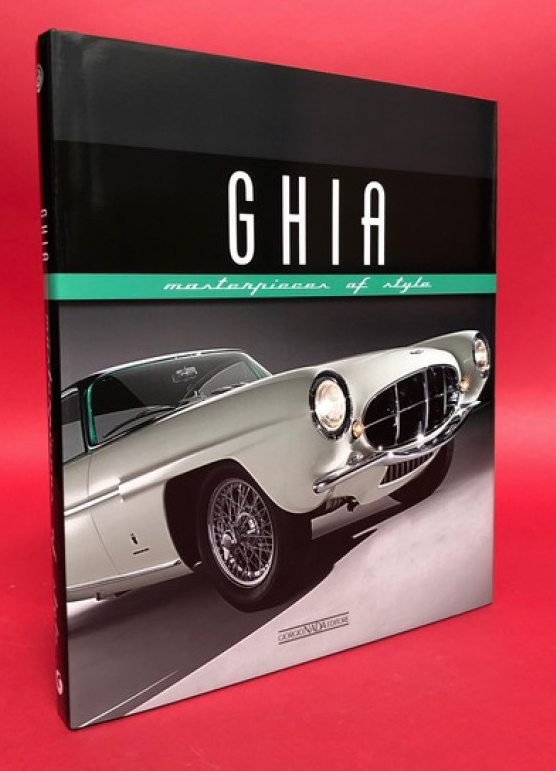
For several generations of enthusiasts, Ghia means little more than a posh trim badge on an otherwise everyday Ford. A bit of extra ruched leather, a fancier hi-fi and some plastic wood – or ‘plood’, as it’s often known.
That one of the most influential carrozziere came to this is a tragedy, a slow death after its absorption by Ford in the early 1970s. The Blue Oval dropped the badge in 2010, Ghia having designed its last road car, the StreetKa, a decade prior.
Luciano Greggio’s 168-page, €48 book wisely focuses on Ghia’s 1950s and ’60s heyday. The story is filled with tragedy and business intrigue, beginning with Giacinto Ghia co-founding the business while he was recuperating after breaking two legs while test driving for Diatto.
The carrozzeria made its name in competition, building lightweight bodies for Alfa Romeos and Fiats, but its meteoric rise really came when it passed to Mario Boano following Giacinto’s death. Ghia’s post-war designs for Ferrari, Alfa and Cisitalia enraptured audiences across the globe, and awakened interest from Detroit.
Chrysler would turn to it for a series of influential concepts, and the rush to take advantage caused friction between Boano and partner Luigi Segre, leading to the former’s departure. Such dramas would come to define Ghia over the next two decades, with courtroom appearances and legal bills only matched in their spectacular nature by those Chrysler concepts.
It was an astounding era, with Pietro Frua, Tom Tjaarda, Sergio Sartorelli, Giovanni Michelotti, and Giorgetto Giugiaro all producing influential designs such as the VW Karmann Ghia, Renault Dauphine, Volvo P1800, Maserati Ghibli, De Tomaso Mangusta, and more. Sadly, for all its success, Ghia couldn’t be run profitably, particularly after Segre’s untimely death in 1963.
Even that master of government subsidies Alejandro de Tomaso couldn’t hold it together. After its Pantera work, Ghia was absorbed by Ford and its operations instantly throttled back. It was eventually largely limited to the odd concept as a remote satellite in the FoMoCo empire, although the introduction of Tjaarda’s Fiesta was a highlight.
This is an engaging book about a design house that deserves wider recognition – its cars are among the most beautiful, yet it is rarely championed in the same way as Pininfarina, Bertone, or Zagato. Arguably, without Ghia and the design departments of Detroit feeding off each other, motoring architecture might have looked very different in the 1950s and 1960s.
Featuring wonderful archive images, rare prototypes, and plenty of surprises, this is an engaging and worthwhile read.
Imagine Too! Towards the Future
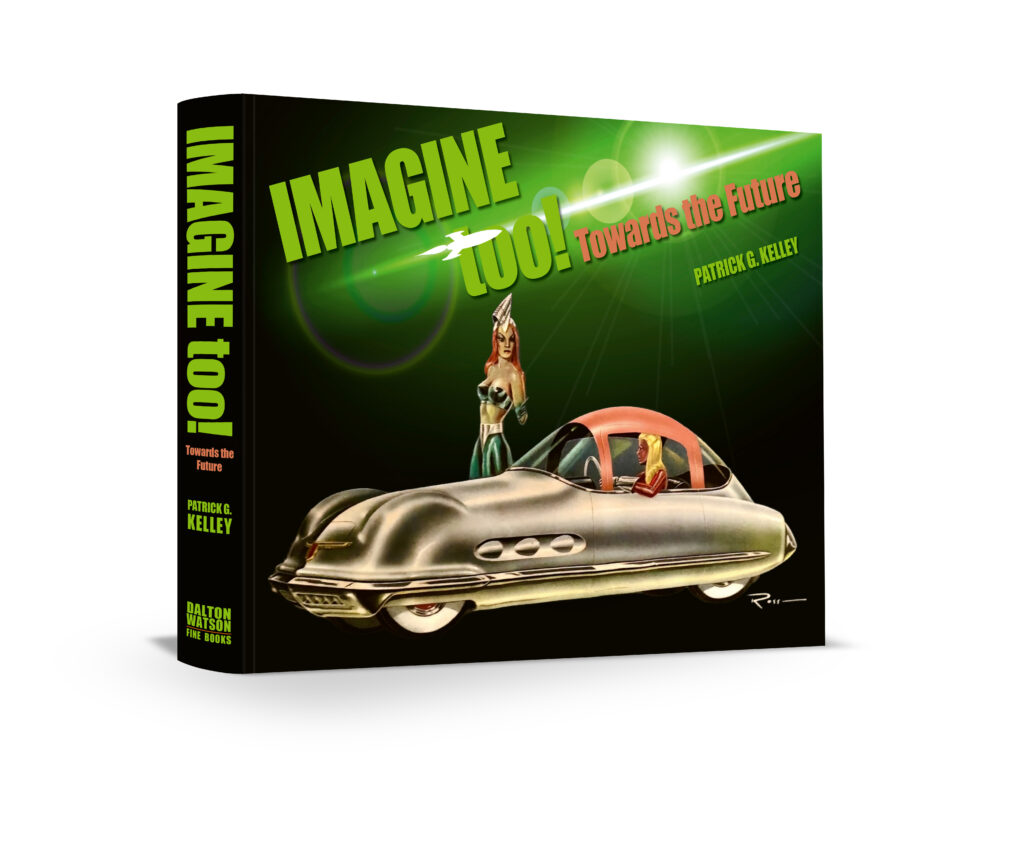
One need only to look at the motoring landscape of evermore ghastly identikit SUVs to muse that the future isn’t quite what it used to be. That’s the feeling you get when reading Patrick G Kelly’s follow-up to IMAGINE! – this 456-page, $150 book is packed full of ever-more eye-widening concepts from the 1940s onwards.
However, it also incorporates vivid hand-drawn advertisements and magazine covers from the period, and it’s here where you get a real feeling of hope and excitement about the future, in artwork that points to something other than the glumness that currently envelops us. It’s hard not to view Arthur Radebaugh’s 1950s vision of an expeditionary craft on the moon as something of a gleeful escape – even if the 21st century hasn’t quite panned out that way.
We love the deeply fun features such as the blueprint of The Jetsons’ Space Car, before moving onto the famed Motorama shows. In period, these offered a tantalising glimpse of showroom-ready and not-so showroom-ready machinery, such as Chevrolet’s Corvette and 1969 Astro III respectively.
However, it is the beautiful paintings and sketches of the cars that could have been which make this book a true delight. While well known names such as Virgil Exner, Ron Hickman, Raymond Loewy Sr and Robert Henry Gurr feature, the joy of this book is discovering new artists and designers, some working within the auto industry, some on the periphery. Indeed, several of the wildest creations are from those whose job could mean toiling away in a truck department.
Although the most outlandish styling immediately catches the eye, real depth comes from identifying where elements have ended up in finished designs. This is especially true of the section on unknown authors; there’s plenty to ruminate on just who informed what.
Beautiful presentation on high-quality paper really lets the artwork shine; thankfully the publishers avoided the temptation to use matt stock. The paper brings out a ‘glisten’ to these images, particularly those from the 1950s to the ’70s.
The book ends with an engaging look at the toys made during this time. Even though we aren’t living the retro-futuristic dreams with our day-to-day cars just yet, the front-room-carpet GP has no doubt inspired generations along the way, giving us hope that the future of mobility will stir the soul.
This highly recommended and uplifting tome will have you coming back for more, and idly thinking about the possibilities of printed car styling (à la Czinger) and some of the book’s designs. Before you get too ahead of yourself, though, we’re sadly probably not going to have nuclear-powered hover cars with fins for some time yet…
Colin Chapman: The Biography
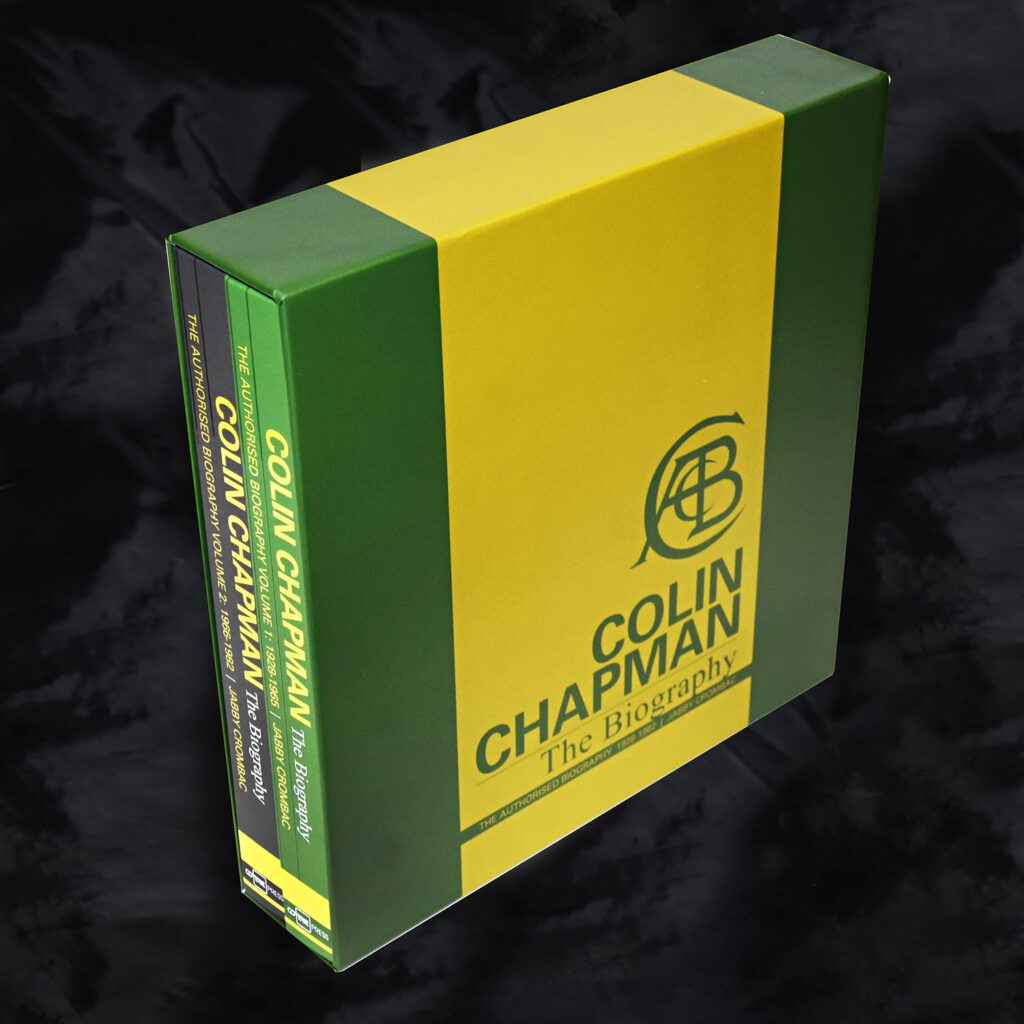
To his detractors, he was a talented chancer who played risky cards, with others paying for the consequences. To everyone else he was a genius, walking the tightrope between innovation and political intrigue with ruthless tenacity.
Wherever you stand on the Colin Chapman divide, Coterie Press’s expansive, two-volume, 528-page tome paints a fascinating picture of a character who earned even Enzo Ferrari’s respect. Produced in association with Colin’s son Clive, along with the crew at Classic Team Lotus, it’s a tribute to the man as the company celebrates 75 years in business.
The book takes its sources from the autobiography of Fred Bushell, Colin’s confidant and Lotus’s long-time finance director, and Gerard Crombac’s 1986 biography. It’s wrapped up with new contributions from Lotus guru William Taylor.
The text may not be new for ardent Hethel watchers, but this is still an essential purchase for any Lotus fan. Many of the 1500 photographs are rarely seen, some have never been seen before, and some have been sourced from the Chapman family personal archives.
It truly is a treasure trove, although interestingly there are some omissions – the focus is very much on the Formula 1 team, with the road-car side of the business only getting an occasional look in. This perhaps reflects the man’s passions – the road cars were the means to the F1 outfit’s ends. It was also the racing team that hurt him the most; the drawn-out battle over the dual-chassis 88 took lumps out of Chapman’s resolve. Without the ability to innovate, he could no longer see the point of F1. This part of the book is particularly sad because it’s easy to see how the injustice of the car’s banning niggled him, right to the end.
In all, this is an excellent record of the race team, the ins and the outs as the years went by. The imagery is truly excellent, and would be worth the book price alone; as it is, the story is beautifully told with an arching narrative supported by Bushell’s observations along with newly sourced text. It’s also great to see Hazel Chapman’s life celebrated. Without her, Lotus would not exist.
Some view Chapman as cold and calculating, but the book paints a much warmer picture, helped by seeing the maestro develop his craft from a garage to the multifaceted company it soon became. There are other volumes that go into great detail about some of the, shall we say, less savory aspects of Chapman’s character. This authorised biography acts as a worthwhile companion piece, and vice versa. A highly recommended read at £125, and imperative to build up a full picture of one of motor sport’s true visionaries.
A Wild Ride: The Making of Valkyrie
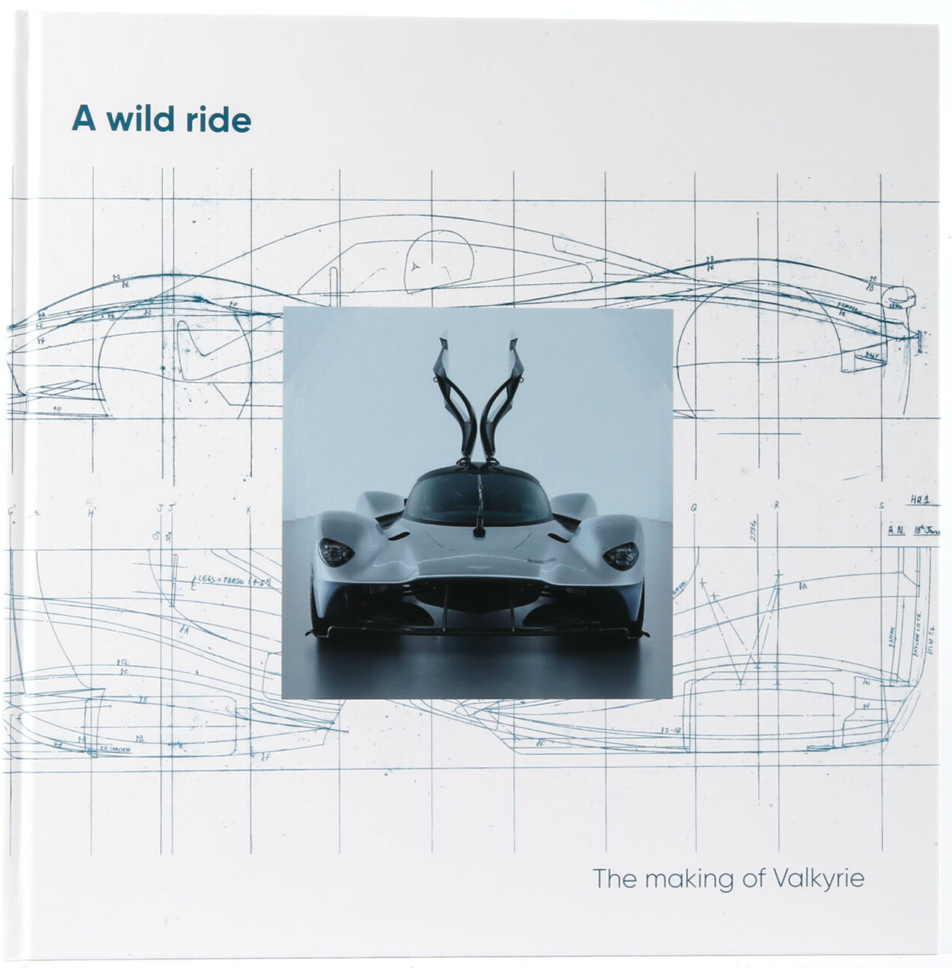
Some of the best ideas are formed in British pubs. Most notably in the automotive world, the all-conquering Ford Sierra Cosworth was conceived over a ploughman’s lunch. Yet for anyone who has followed the twisting tale of the Aston Martin Valkyrie, the result of a 2015 meeting of minds in a drinking hole near Milton Keynes, the jury could still be out.
Back in the mid-teens, flushed with Formula 1 success, Red Bull had a problem. Adrian Newey, the most talented F1 car designer of the modern age – and some would argue, of all time – had been offered a double-your-salary deal and a free hand to build the ultimate road car by Ferrari. To keep him energised in Red Bull colours, Christian Horner called on near-neighbour Aston Martin with an idea – the consummate hypercar courtesy of Newey.
There are 40 miles between Red Bull and Aston Martin’s respective HQs, but as Bart Lenaerts’ compelling narrative reveals, it might well have been a galaxy far, far away – there’s certainly enough drama here for a space opera.
Newey’s pursuit of the ultimate might work within the relatively permissive realm of F1, but building a road car is different. The latter is a land of homologation rules, styling needs and, most critically, budgets. Red Bull struggled with all of these elements, and as the costs mounted, rancor between the two firms soon built up.
It’s a fascinating tale, backed up with Lies de Mol’s behind-the-scenes images. Thanks to unprecedented access to all aspects of the development process, reading the first-person testimony of some of the arguments, anguishes and problems as the alternate worlds of F1 and road cars collide can be difficult to do without wincing.
In the end, Red Bull would withdraw from the project as the Stroll empire began – but the drama hasn’t stopped, with issues with some suppliers and dealers, and rumoured troubles with the first batch of cars to be delivered.
The book doesn’t touch on these, leaving the story just as the model was finally signed off for production; the truth is, the Valkyrie tale is probably a long way from being over, and further bumps in the road lie ahead.
That shouldn’t dissuade anyone from buying this €90, 326-page book, though. It’s a captivating insight into not only the politics of such a high-profile project but also the passion, dedication and ingenuity of the engineers and designers who made it happen.
That the Aston Martin Valkyrie exists at all is astounding, and is something to dine out on – although hopefully on finer fare than the usual pub grub.
Ultimate Works Porsche 962: The Definitive History

Most books oversell the word ‘definitive’, but as this three-volume, 1400-page labour of love proves, sometimes the word can be somewhat understated. The Porsche 962’s effect on endurance racing is something that should not be understated, either.
Although the marque’s 956 began the winning streak in the Group C era, the evolutionary leap to the 962 was even more remarkable, given that Norbert Singer had just three months to build a successor to the 956 to fulfil IMSA’s demands.
This story, plus the often rancorous discussions between Porsche and IMSA, is extensively detailed in the first volume, which covers the official Works years, 1984-87. Serge Vanbockryck had unprecedented access to the letters, faxes and characters involved.
Although the 962’s competitive debut with the Andretti clan at the wheel didn’t end with a victory, it’d soon be pretty much the default choice for Group C privateers. It debuted in the World Sportscar Championship in 1985, in which Porsche won the overall title while Hans-Joachim Stuck and Derek Bell took the drivers’ title. It was, however, a bruising year for the marque. Several members of the Works team were severely injured in a pitlane fire at Hockenheim, and Manfred Winkelhock perished when his Kremer 962 crashed at Mosport Park, Canada – and then there was the Spa 1000km.
The fatal collision between Stefan Bellof’s 956 and Jacky Ickx’s Works 962 is detailed with frame-by-frame photography. Yet it is the written testimony, in particular that of Massimo Sigala, that proves most haunting.
The following year was far more challenging – although the Works team took the opening round at Monza and won overall at Le Mans, the competition was heating up. Porsche was also competing in IndyCar and Formula 1, and following victory at Le Mans ’87, it officially pulled out of sportscar racing. It fell to Joest to fight the flag in a semi-Works capacity; the subject of volume two.
The post-WSC wilderness presented one last chance for 962 success, via a road-car loophole. The result was the Dauer 962, which gave Porsche its 13th Le Mans victory, in 1994. Finally, the third volume profiles the Works drivers and cars. For the latter, the profile goes deep – in some cases, lap-by-lap reports, diff settings and more.
Yet this is no dry, technical slog for the ardent 962 enthusiast only. Vanbockryck’s description of each race weekend reads with the pace of a gutsy fiction title, while the human sides of motor racing are never far away.
Add in the extensive archive imagery and bespoke photography, and this limited-to-962 edition is a must for any Group C aficionado. Prices start at £850.
Restomods: Better Faster Cooler

As OEM hypercars become unusably fast and other modern performance machines are lost or homogenised into EV SUVs, the growth of the restomod scene has become foremost in people’s minds.
It’s about time for a deep dive into the subject, then – and that’s what Bart Lenaerts’ colourful 252-page book sets out to do. Firstly, he defines what a restomod isn’t, before selecting 13 of the leading proponents of the genre.
Some are more obvious than others, such as Eagle’s E-types, Alfaholics’ takes on the 105 Series and Kimera; Singer is notable by its absence. However, there’s much to enjoy in the stories of restomods that perhaps don’t have quite such a large following, such as the MZR Roadsports 240Z and the Citroën SM2 by Gallet Automobiles.
Each chapter relates the history of each restomod, its builder and their often-twisty route to the finish. The Automobili Maggiore Project M is, for legal reasons, a Ferrari 308 that cannot be presented to the world in that way. Although a memorandum of understanding was signed allowing the project to continue, one poor chap still has his car locked away for 20 days because a policeman thought it was a replica. Then there’s the 911 by Sander Automotive, the result of a 30,000ft hungover brainstorming session by founder Dirk Lührmann.
It’s these kinds of stories, plus Lenaerts’ breezy, irreverent prose, that reflect the somewhat different thinking that goes into each build, as well as the different thinkers who create them. There’s a refreshing sense of freedom to have a take on the high-end classic car market that doesn’t necessarily involve counting the number of rivets to be held in high esteem.
Of course, there are readers for whom such concerns do matter; if you consider restomods to be an aberration, this book is not for you. But even if you’ve no interest in buying a restomod, you can’t help but be impressed by the dedication and passion that go into each one.
There is a theme behind several of the projects – the builders didn’t have to do them, they just loved the idea and ran with it, and the business element was formed around it. We rather appreciate that…
The only real negative is the choice of matte paper for the pages of our review copy. While it feels nice to the touch and works well with the cool illustrations, it makes the excellent photography dull and lacking in sparkle; a shame given that the cars and characters featured within the book are anything but.
Nevertheless, the words more than make up for this, and for €60 for the standard version and €180 for the special edition, you’ll derive much pleasure from the book – and feel your wallet start to twitch…
Goodwood: 1948-2023

This year’s Festival of Speed may well be remembered for the weather-enforced Saturday closure, which is a shame – 2023 was the grand celebration of both its 30th anniversary and the Goodwood Motor Circuit’s 75th.
This 336-page, £75 book runs through Goodwood’s full story, from its original racing days right up to its current, multi-faceted events programme. Since the first Festival of Speed back in 1993, augmented by the first Revival five years later, the venue has continued to innovate, improve and wow with stunning attention to detail.
It’s little surprise, then, that the world’s greatest racing drivers, teams and manufacturers all want to be a part of it, and notable luminaries who’ve contributed to the Goodwood story are profiled here. On more than a few occasions this can prove poignant, especially with regards to the likes of Colin McRae, Peter Brock and Dan Wheldon, who all made spectacular appearances (particularly Wheldon with his Star-Spangled Banner routine), only to be tragically killed just months or even weeks later.
Witnessing Bruno Senna driving his late uncle’s McLaren MP4/6 F1 car at the Members’ Meeting was a ‘dust in the eye’ moment for anyone who saw it live in 2021, and the simple sight of the Brazilian national colours blended with McLaren’s red and white brings it back here. However, Goodwood is a place of joy, and there’s plenty of that, with evocative images of cars, riders and drivers getting stuck in, or just relaxing in the ambience.
The book is not simply a pictorial history, though. Mark Walton has corralled a fine selection of both writers and interviewees; Doug Nye delves into the circuit’s history, while Nick Mason and Gordon Murray look back at the trials and tribulations of the first Festival of Speed – the latter making the trip down with George Harrison in their Light Car Company Rockets.
However, it is Sir Jackie Stewart’s memories of the circuit’s very early years that prove most interesting; it was, after all, the site of his critical test for Ken Tyrrell that set up his glorious Formula 1 career.
The Revival memories from Damon Hill and Tiff Needell strike a chord – particularly from the latter, who actually watched races at the circuit as a nipper. He agrees that 1998’s opening event was like stepping straight back in time. And yes, Ray Hanna’s Supermarine Spitfire antics along the pit straight make an appearance…
As you can expect with a Goodwood production, the design, layout, photography and general presentation are excellent. Avowed Goodwood groupies will adore it.
Figoni on Delahaye
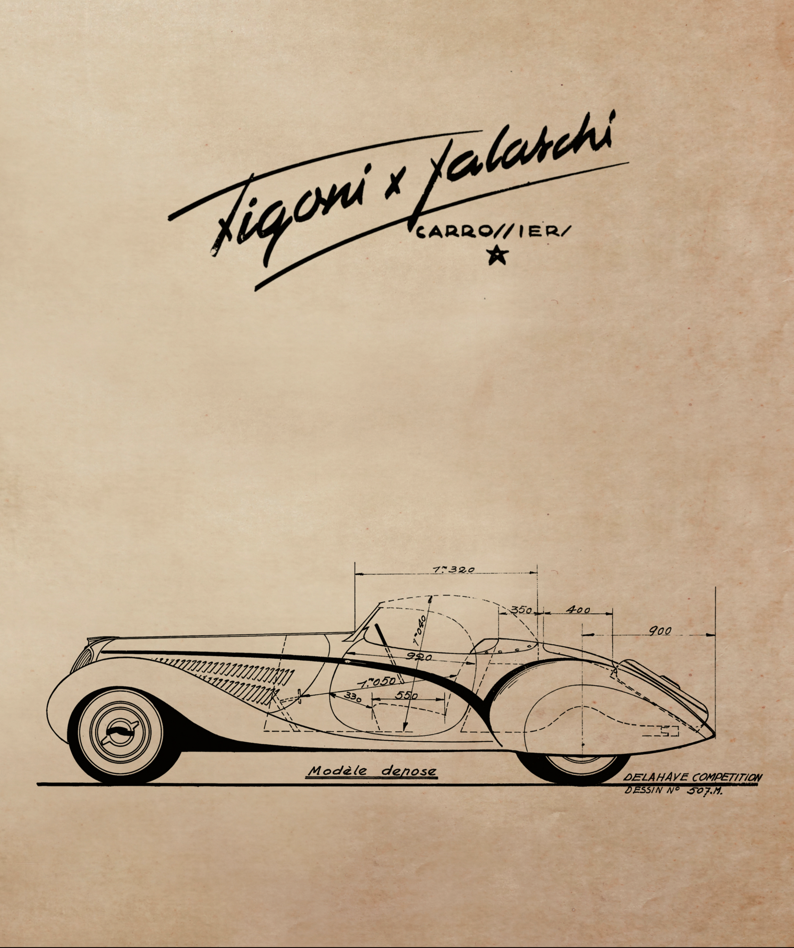
The recent sad loss of Peter Mullin shed a new light on reviewing this book. Peter and his wife Merle were dedicated to bringing this most maximalist of motoring eras to the wider public, rather than hiding its very best designs away in a private collection. Check out Magneto issue 20 for our special dedication to Peter.
It’s no surprise to find that Peter and Merle were big supporters of Figoni on Delahaye, which chronicles the bodies Figoni et Falaschi built on Delahaye chassis through a mixture of archive imagery, technical drawings and stunning new photography. This is all backed up with the story behind each chassis. The imagery really is excellent – in particular the faithfully reproduced technical diagrams and contemporary advertising – and it gives the reader a real sense of the time’s glamour.
Richard Adatto and Diana Meredeth’s writing is a delight to read, really painting a detailed picture of a heady time where dreams could be rendered on four wheels. There are many amusing tales from each car’s history, such as when no. 532’s door handle fell off during a snowstorm, which meant that the door had to be wired shut, and the sunroof and the driver’s window kept open to allow the wiring to be fixed in place.
This is what makes these cars fascinating beyond their lust-inducing lines; often, the people who ordered them new were characters as fascinating as the vehicles that eventually appeared.
Some cars are lucky to survive at all – no. 700 was found in a scrapyard in Algeria in the 1990s and is now in glorious condition. Or how about the third Type 165, which Sir Arthur Conan Doyle’s son claimed had been seized in Romania by the Russians and presented by the Communist Party as a gift to Stalin, before having its V12 replaced with a truck engine? Then there was no. 1009, which was bought for pennies in France by an American soldier, shipped back home by the US Army and left in the New York docks until 1956. Each car has morsels of fascinating history – vehicle related, human, social or, often, all three – that will have you coming back for more.
There are plenty of interesting diversions – the bitter dispute with French illustrator Géo Ham is worth a read, to put right many internet ‘truths’ that are anything but. This book has to be an essential purchase for those with an interest in the breed, while for people who have yet to fully fall in love with this era of car, this is an excellent way to start your odyssey. Moreover, this 302-page, $250 tome is an excellent way to remember and honour Peter Mullin’s passionate dedication to such four-wheeled art.
TEN MORE TO CONSIDER…
Room for some more under the tree? Here are a few more highlights from this year’s collection of reads.
Benetton: Rebels of Formula 1

Love or hate them, there have certainly been Characters with a capital ‘C’ involved in the Benetton team. Damien Smith’s 344-page, £60 book charts the rise from sponsor to constructor (via Toleman’s ashes), world-beater to also-ran. Along the way there’s glory, innovative approaches to the rules, tantrums and more, which makes for a pacey narrative that’s illuminated by interviews with key players such as Flavio Briatore. It’s a thrilling read often entertaining and certainly worth the price, particularly for the insiders’ view of the infamous 1994 season.
The Austin Pedal Car Story
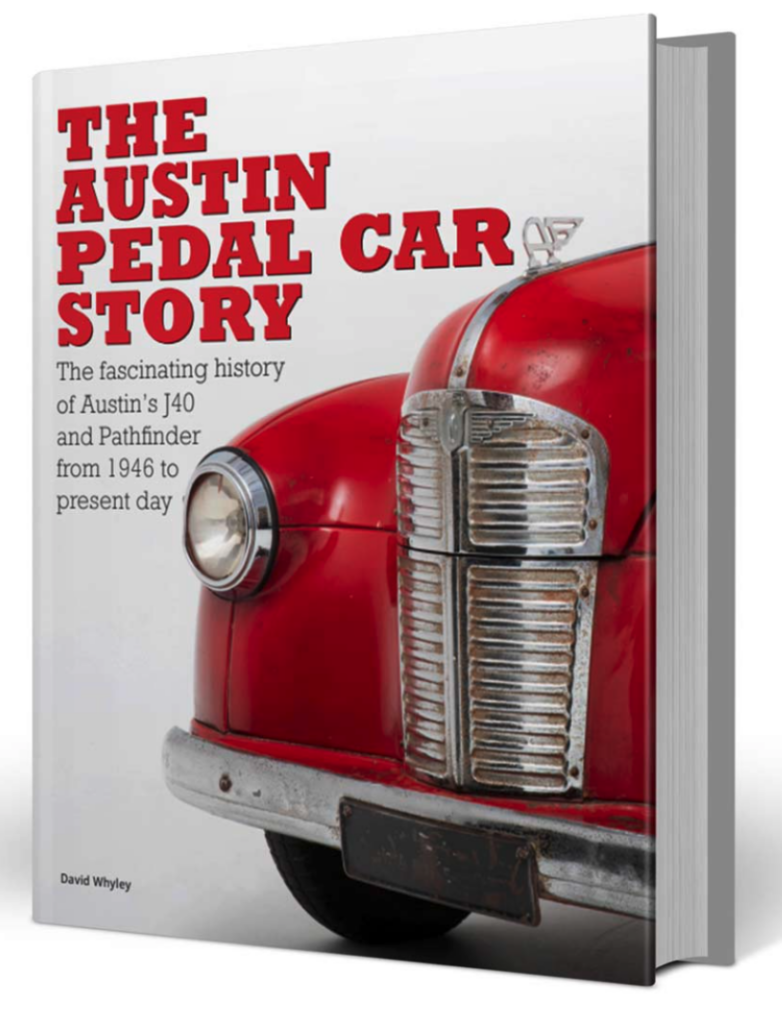
One of the highlights of the Goodwood Revival is the Settrington Cup for Austin J40 and Pathfinder pedal cars. Their background story is even more dramatic than the races, and David Whyley’s 488-page, £85 book tells it in vivid detail. It’s a warm, human tale – Welsh miners left with lung disease found a new role and hope building these beloved vehicles. The story goes beyond that, relating a dramatic development and enduring legacy, with fascinating interviews and rarely seen images and data. This comprehensive book is heartening to read, and full of remarkable tales.
Driven To Crime: True Stories of Wrongdoing in Motor Racing
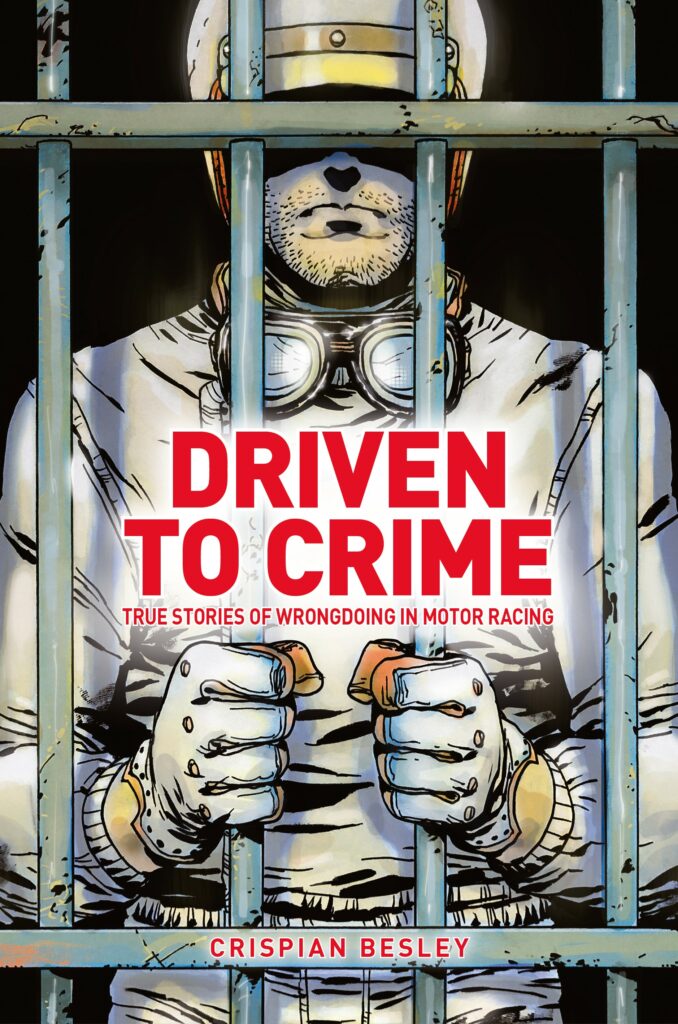
With true-crime TV documentaries becoming irrepressibly popular, Crispian Besley’s 480-page, £40 book is a timely read. However, while many docs can seem exploitative and some crime tomes glamorise criminality, it’s not the case here. The tales are gripping and exciting, but in the most part it’s clear the wrongdoers end up with a bitter pill after the sweetness of hollow successes – although some could easily translate to TV or film. While the seriousness of the crimes and the effects on the victims aren’t flinched from, it’s still a page-turner.
Classic Car Auction Yearbook 2022-2023

Now in its 28th edition, Adolfo Orsi’s granular take on the auction market becomes more comprehensive every year. The past 12 months have seen an icy wind pass through the market – or so the doomsayers would have you believe. However, with the aid of this 420-page book’s extensive number crunching, the reality isn’t quite as horrifying as you might imagine; take away last year’s post-Covid boom and the market is still performing well. With more than 10,737 auction cars analysed, this is a great go-to for those who buy and sell regularly. It costs $109.95.
Great British Racing Drivers

This 216-page book showcases the photographic work of Indira Flack, capturing the wild and wonderful world of British racing drivers. Featuring insight from Doug Nye, and a foreword by the Duke of Richmond, these portraits provide a novel take on the men and women who are devoted to motor sport, with names from the past, present and future. Ten per cent of each copy sold, at £39.98, will be donated to Sir Jackie Stewart’s charity, Race Against Dementia.
Bugatti: The Italian Decade
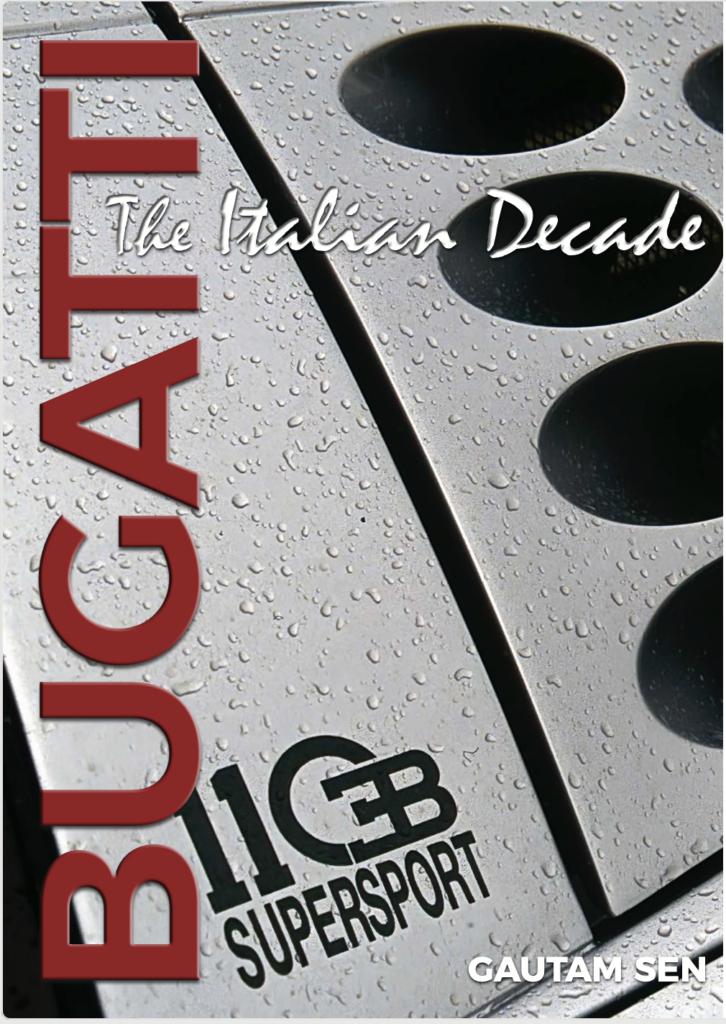
Bugatti’s rebirth in the late 1980s and implosion in the 1990s would make for a fantastic Netflix drama. Gautam Sen’s 400-page, £125 book recalls the many ups and downs, with behind-the-scenes photos from key player Jean-Marc Borel, who corrects many wrong assumptions. This in-depth tome contains plenty of rarely seen diagrams, PR material and sketches, some of them hinting at what the future may have been if Romano Artioli’s dream had come to fruition. It’s a fascinating story that’s well told, with illuminating insights from those right at the heart of the adventure.
Lancia Rally: The Golden Era
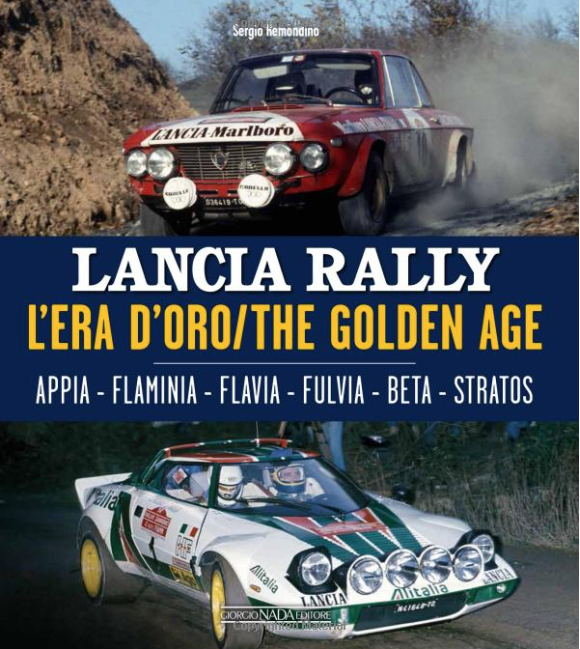
Lancia may be being rebooted as an all-EV luxury label, but for many the brand is tightly interwoven with rallying. Sergio Remondino’s 216-page, €50 book starts the story in the 1950s, beginning with the Appia Zagato. It then brings in Cesare Florio, who’d be a critical figure as the Fulvia and Stratos elevated Lancia to the top of the sport in the 1960s and ’70s despite courting controversy and tragedy in almost equal measure. Excellent archive photography and illuminating words from those involved make this a great addition to any library dedicated to the rough stuff.
100 Years of Legends: The Official Celebration of the Le Mans 24 Hours
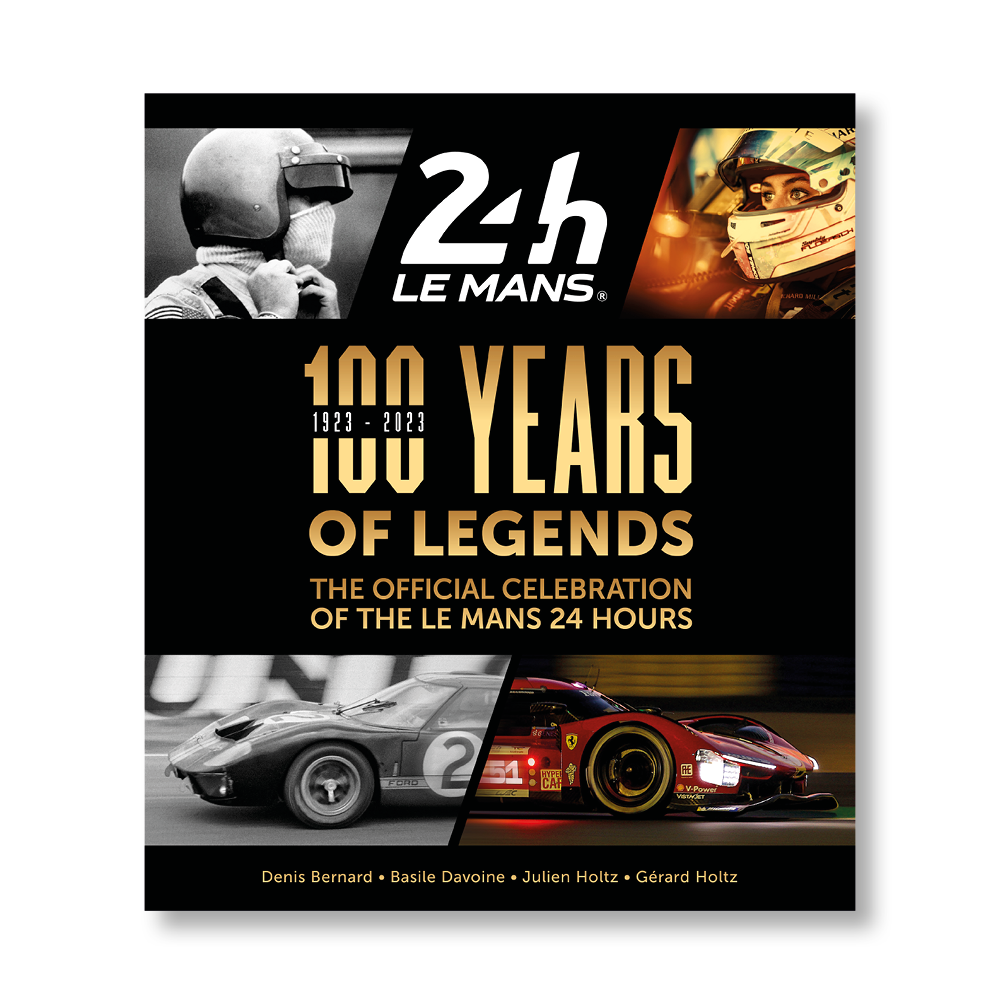
This comprehensive 336-page book has been produced in association with the ACO, the organiser of the Le Mans 24 Hours. The four authors have produced a fine work that brings to life all of the differing elements of the pinnacle of endurance racing. Intelligently but not densely written, there are nuggets in here that even seasoned Le Mans lovers may have missed. However, it is the interviews with the likes of Henri Pescarolo, Derek Bell and Vanina Ickx that are the icing on the cake, providing an excellent insight into what it takes to survive 24 hours around La Sarthe. It costs £70.
The Last Lap: The Mysterious Demise of Pete Kreis at the Indianapolis 500
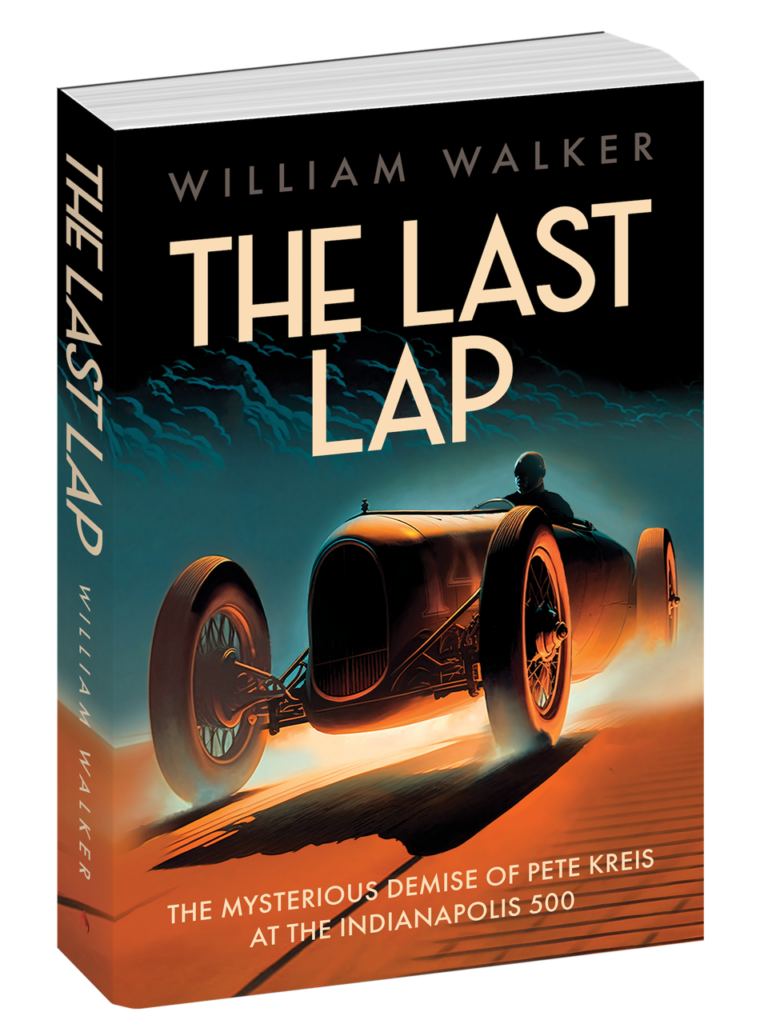
While this absorbing 304-page book reads like a pulp-detective story, the tale is alarmingly real. William Walker has dedicated years to uncovering just what happened when Pete Kreis drove an apparently healthy car into the wall at turn one at the 1938 Indy 500. He and his mechanic were killed, but the mysterious crash has been debated for many years. With a gripping sense of narrative, this £24.95 book is a great read even for those with no real interest in racing. Its conclusion hits home hard.
Goldie: The Amazing Story of Alfred Goldie Gardner, The World’s Most Successful Speed-Record Driver
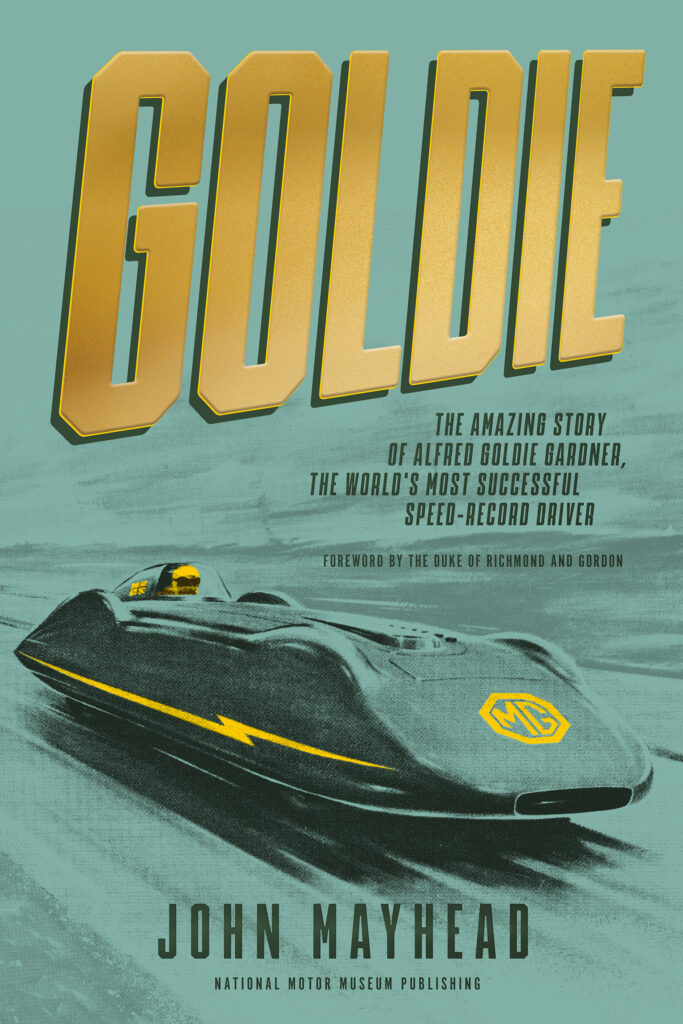
Alfred Goldie Gardner isn’t the most well known name in the annals of British motoring history, but given his achievements that’s a travesty. He notched up 150 national and international speed records, and according to the FIA still has three in his name despite passing away in the late 1950. John Mayhead’s beautifully researched 312-pager contains many previously unseen documents and photographs of a life lived at the very edge of physics – and ultimately and sadly, past it. It’s an engaging book that revels in Goldie’s chutzpah in the face of adversity, even if it was his ultimate passion for speed that would be his eventual undoing. Highly recommended, and excellent value at £20.


